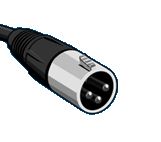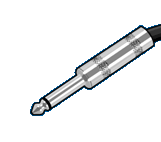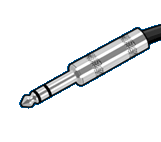IT's All About Television System And Parts
(31).jpg)
Have you ever thought how the television works to the point that you enjoy your favorite program while siting in your couch? Well, find out about television systems and parts in the quiz below. All the best.
- 1.
What are the primary additive colors in television?
- A.
Red, blue, and yellow
- B.
Red, green, and blue
- C.
Red, green, and yellow
- D.
Magenta, yellow, and cyan
- E.
Red, cyan, and magenta
Correct Answer
B. Red, green, and blueExplanation
The primary additive colors in television are red, green, and blue. These colors are used to create all other colors on a television screen. When combined at full intensity, they create white light, and when no colors are present, they create black. This color model is known as RGB and is used in various electronic devices such as televisions, computer monitors, and cameras.Rate this question:
-
- 2.
What image elements does the prism block contain?
- A.
Chrominance channel
- B.
Beam-splitting prisms, filters, and CCDs
- C.
Color plate
- D.
Luminance channels
- E.
Luminance channels and CCDs
Correct Answer
B. Beam-splitting prisms, filters, and CCDsExplanation
The prism block contains beam-splitting prisms, filters, and CCDs. These elements are used in imaging systems to separate and manipulate different aspects of the image. Beam-splitting prisms are responsible for splitting the incoming light into different color channels, while filters help in adjusting the color balance. CCDs (Charge-Coupled Devices) are used to capture and convert the light into digital signals. Together, these elements work to capture and process the image in a camera or imaging device.Rate this question:
-
- 3.
Which statement best describes the video imaging process?
- A.
The image is captured on film and developed by chemicals
- B.
The light is converted to sound waves for recording
- C.
The light waves are carried directly to the receiver
- D.
The light is converted into electric energy
- E.
The image is divided into subtractive colors
Correct Answer
D. The light is converted into electric energyExplanation
The video imaging process involves converting light into electric energy. This is typically done using a photosensitive sensor, such as a charge-coupled device (CCD) or a complementary metal-oxide-semiconductor (CMOS) sensor, which captures the light and converts it into electrical signals. These electrical signals are then processed and encoded into a digital format that can be stored or transmitted. This conversion of light to electric energy allows for the creation and manipulation of images in a digital format, which can be displayed on screens or recorded for later use.Rate this question:
-
- 4.
What is the most common imaging device in television cameras?
- A.
CCD
- B.
CPU
- C.
RCU
- D.
LED
- E.
CCU
Correct Answer
A. CCDExplanation
CCD stands for Charge-Coupled Device, which is the most common imaging device used in television cameras. It converts light into electrical signals, allowing the camera to capture and process images. CCD technology is widely used in television cameras due to its high sensitivity, low noise levels, and ability to capture high-quality images with accurate color reproduction. CPU (Central Processing Unit), RCU (Remote Control Unit), LED (Light-Emitting Diode), and CCU (Camera Control Unit) are not imaging devices commonly found in television cameras.Rate this question:
-
- 5.
What are the four basic elements of a camera chain?
- A.
Camera, switcher, preview monitors, and CCU
- B.
Camera head, CCU, camera pedestal, and lens
- C.
Camera head, sync generator, power supply, and CCU
- D.
Power supply, pickup device, viewfinder, and camera head
- E.
Camera head, camera cable, VTR, and CCU
Correct Answer
C. Camera head, sync generator, power supply, and CCUExplanation
The correct answer is "Camera head, sync generator, power supply, and CCU". These four elements are essential components of a camera chain. The camera head captures the image, the sync generator ensures proper synchronization, the power supply provides the necessary power, and the CCU (Camera Control Unit) controls and processes the camera signals.Rate this question:
-
- 6.
As video operator, or shader, which of the following CCU operations will you NOT perform?
- A.
Adjusting the white level
- B.
Adjusting for the trueness of color
- C.
Adjusting the level of the sync signal
- D.
Adjusting for the contrast range of the image
- E.
Adjusting the black level
Correct Answer
C. Adjusting the level of the sync signalExplanation
As a video operator or shader, you will not perform the operation of adjusting the level of the sync signal. This operation is typically handled by the sync generator or the equipment responsible for generating the sync signal. The sync signal is used to synchronize the video and audio signals and ensure proper playback. Adjusting the level of the sync signal is not a task that falls under the responsibilities of a video operator or shader.Rate this question:
-
- 7.
What does the gain control on an ENG/EFP camera compensate for electronically?
- A.
Very low light levels
- B.
Very high light levels
- C.
Dim colors
- D.
Too few pixels
- E.
Intercom levels
Correct Answer
A. Very low light levelsExplanation
The gain control on an ENG/EFP camera compensates for very low light levels electronically. This means that when the camera is in a low light environment, the gain control will electronically amplify the signal to make the image brighter. This is useful in situations where there is not enough natural light available, such as shooting in a dark room or at night. By adjusting the gain control, the camera can capture a usable image in challenging lighting conditions.Rate this question:
-
- 8.
What are the most common connectors for video cables?
- A.
BNC and RCA phono
- B.
XLR and RCA phono
- C.
BNC and mini
- D.
BECA and RCA phono plug
- E.
XLR and mini
Correct Answer
A. BNC and RCA phonoExplanation
BNC and RCA phono connectors are the most common connectors for video cables. BNC connectors are widely used in professional video applications due to their locking mechanism and ability to carry high-frequency signals. RCA phono connectors, also known as RCA jacks, are commonly used in consumer electronics for video and audio connections. These connectors are easily recognizable by their distinctive red, white, and yellow color coding.Rate this question:
-
- 9.
What are the are the standard color attributes of the electronic color image?
- A.
Hue, saturation, and resolution
- B.
Hue, saturation, and black
- C.
Hue, saturation, and white
- D.
Hue, saturation, and brightness
- E.
Hue, saturation, and pixels
Correct Answer
D. Hue, saturation, and brightnessExplanation
The standard color attributes of an electronic color image are hue, saturation, and brightness. Hue refers to the specific color of the image, such as red, blue, or green. Saturation determines the intensity or purity of the color, with high saturation indicating a vibrant color and low saturation indicating a more muted color. Brightness, also known as value or lightness, determines how light or dark the color appears. These three attributes together define the overall appearance and perception of color in an electronic image.Rate this question:
-
- 10.
What does picture resolution mean?
- A.
The picture sequence resolves the story
- B.
The electron beam scans every line from top to bottom
- C.
The measurement of picture detail
- D.
The electron beam scans every line from bottom to top
- E.
The measurement of the scanning cycle C
Correct Answer
C. The measurement of picture detailExplanation
Picture resolution refers to the measurement of picture detail. It determines the level of clarity and sharpness in an image, indicating the amount of information or pixels that can be displayed. A higher resolution means more detail can be seen, while a lower resolution results in a less detailed image. Therefore, the correct answer is "the measurement of picture detail."Rate this question:
-
- 11.
Under what field production conditions would you use an RCU? What is its function? How does an ENG camera function without an RCU?
- 12.
What makes an HDTV camera " High Definition"? Why does it's picture have a wider aspect ration then those of normal television cameras?
- 13.
What do vertical and horizontal resolution actually mean?
- 14.
How do multicore, triax, and fiber-obtics cables differ? What are the relative advantages and disadvantages of each?
- 15.
You are asked to recommend specific types of cameras for a high school that teaches beginning TV production. What would you recommend? Why?
- 16.
What is the difference between the interlaced scanning system and the progressive scan system?
- 17.
- A.
RCA
- B.
MIDI
- C.
CAt-5
Correct Answer
A. RCA -
- 18.
- A.
RCA
- B.
XLR
- C.
DNA
Correct Answer
B. XLR -
- 19.
- A.
RCA
- B.
USB
- C.
XLR
Correct Answer
B. USB -
- 20.
- A.
1/4 " TS
- B.
1/4 " TRS
- C.
XLR
Correct Answer
A. 1/4 " TS -
- 21.
- A.
1/4 " TS
- B.
1/4 " TRS
- C.
XLR
Correct Answer
B. 1/4 " TRS -
- 22.
- A.
1/8 " TS
- B.
1/8 " TRS
- C.
RCA
Correct Answer
B. 1/8 " TRS -
Quiz Review Timeline +
Our quizzes are rigorously reviewed, monitored and continuously updated by our expert board to maintain accuracy, relevance, and timeliness.
-
Current Version
-
Mar 21, 2023Quiz Edited by
ProProfs Editorial Team -
Oct 12, 2010Quiz Created by
Devinmarsh
 Back to top
Back to top








